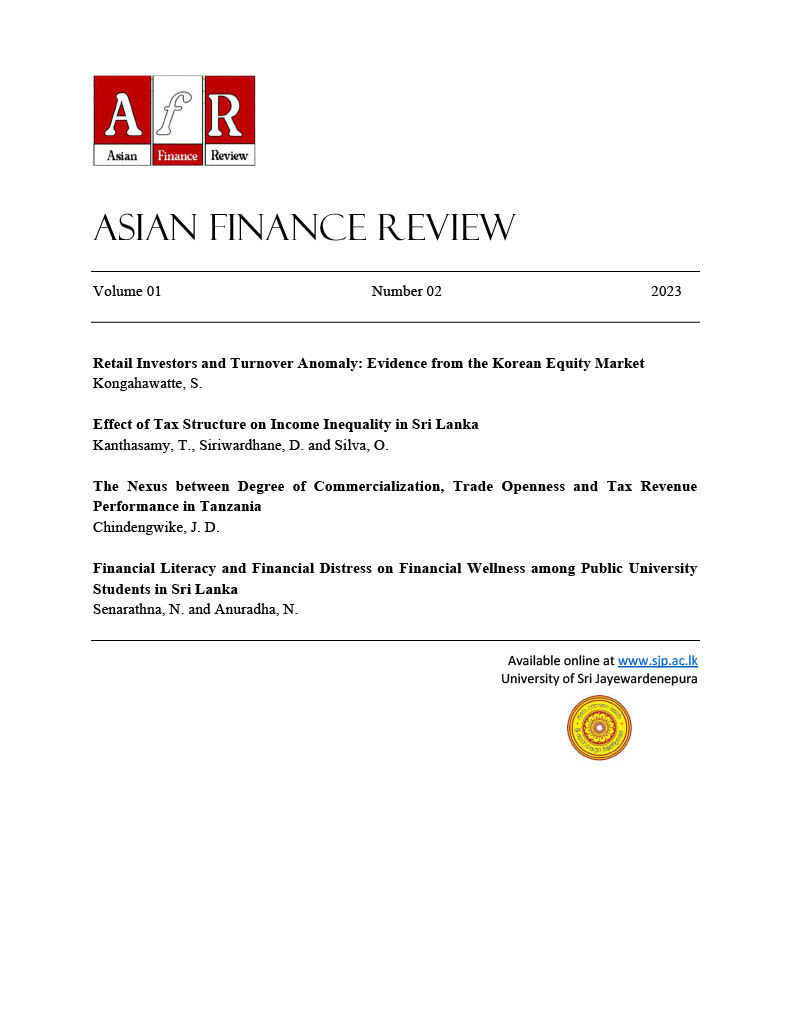Effect of Tax Structure on Income Inequality in Sri Lanka
DOI:
https://doi.org/10.31357/afr.v1i2.6912Keywords:
Income Inequality, Tax Structure, ARDL Model, Sri LankaAbstract
Growing income inequality is seen as one of the most important global concerns in this decade. Hence, the Sustainable Development Goals (SDGs) 2030 aims at reducing income inequality within and among countries. IMF emphasizes that income inequality emerged as one of the critical concerns for economic policy in both developed and developing countries. However, as shown by the UN, Sri Lanka is far lower than the South Asian regional income distribution standards owing to its high inequality. At the same time, tax revenue has become one of the major concerns in the country due to its broadened internal deficit. In this background, this study examines the short-run and long-run effects of tax structure on income inequality in Sri Lanka utilizing annual statistics from 1980 to 2019 by employing the ARDL model. Findings revealed that in the long run, value-added and excise taxes have a significant association with income inequality in Sri Lanka. However, the association between personal income tax and income inequality was positive but insignificant. In contrast, corporate income tax and import duty have a statistically significant negative association with income inequality in Sri Lanka. Further, in the short run, at the overall level taxes are not significantly associated with income inequality except the personal income tax which has a significant negative association with income inequality.



